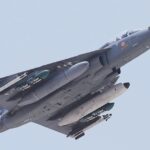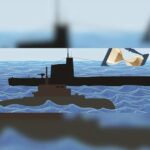
INS Vikrant carries around 30 aircraft, including MiG-29K fighters, and Kamov-31 and MH-60R Seaking multi-role helicopters
By Vikas Gupta
Defence News of India, 26 Aug 22
In Kochi on September 2, Prime Minister Narendra Modi will preside over the commissioning of the country’s first indigenous aircraft carrier (IAC-1), the culmination of what the navy described on Thursday as “the shipbuilding project most prestigious warfare in maritime history”. from India.
“It is indeed a proud moment for our great nation, as with the commissioning of Indian Naval Ship (INS) Vikrant, India has joined an elite list of five maritime nations with the niche capability to locally design and build an aircraft carrier of over 40,000 tons,” the navy said.
INS Vikrant will also be by far the largest warship ever built in an Indian shipyard. Vikrant means “victorious” and “valiant”.
IAC-1, which has costs around Rs 20,000 crore to build,is the namesake of an illustrious predecessor. Originally built as the Royal Navy’s aircraft carrier, Her Majesty’s Ship (HMS) Hercules, the first INS Vikrant became an Indian warship in March 1961. She remained in service until 1997, playing a vital role in the 1971 war blockading what was then East Pakistan.
The reborn INS Vikrant was designed by the Warship Design Bureau (WDB), the Navy’s in-house design establishment. It was built by Cochin Shipyard Limited (CSL), a public sector shipyard under the Ministry of Ports, Shipping and Waterways.
The job of an aircraft carrier is to achieve air superiority offshore, and to do this, INS Vikrant embarks an air wing of 30 aircraft. These include MiG-29K combat aircraft, Kamov-31 and MH-60R Seaking multi-role helicopters, as well as Dhruv advanced light helicopters and light combat aircraft (Navy).
INS Vikrant is equipped with a ski jump to launch planes and a set of three “stop wires” to stop them on their return after completing their mission. This combination of methods is known as a “short takeoff but arrested recovery” (STOBAR).
The Vikrant has been in production since April 2005, when the “steel cutting” ceremony took place. To bolster the carrier’s indigenous content, the warship-grade steel it is made from has been successfully indigenized by the Steel Authority of India (SAIL), in conjunction with the Defense Research and Development Organization.
The hull took nearly four years to fabricate and the ship’s keel was laid in February 2009. The first phase of construction was completed with the ship’s launch in August 2013. It set sail in August 2021 and has completed several test rounds since then.
The transporter, which is 262 meters long and 62 meters wide, displaces around 43,000 tonnes when fully loaded. Pdriven by four gas turbines that generate 88 megawatts of power, INS Vikrantoperates up to a maximum speed of 28 knots (52 kilometers per hour) and has a range of 7,500 nautical miles (13,900 km).
The warship has about 2,200 separate compartments, which house the machinery and a crew of about 1,600, including specialized cabins for female officers and sailors.
INS Vikrant is designed with a high degree of automation for machine operation, navigation and ship survivability. It is equipped with state-of-the-art equipment and systems. These include the latest medical facilities, a modular operating room, a physiotherapy clinic, an intensive care unit, laboratories, a computerized tomography scanner, x-ray machines, a dental complex, a isolation and telemedicine facilities.
The navy claims that INS Vikrant symbolizes the unity of India as products from 18 states and union territories of India have gone into its manufacture. These include products from Ambala, Bangalore, Coimbatore, Daman & Diu, Hyderabad, Howrah, Indore, Jalandhar, Kachch, Kota, Kanpur, New Delhi Panaji, Pune, Silvassa, Thiruvananthapuram and Vishakhapatnam.






